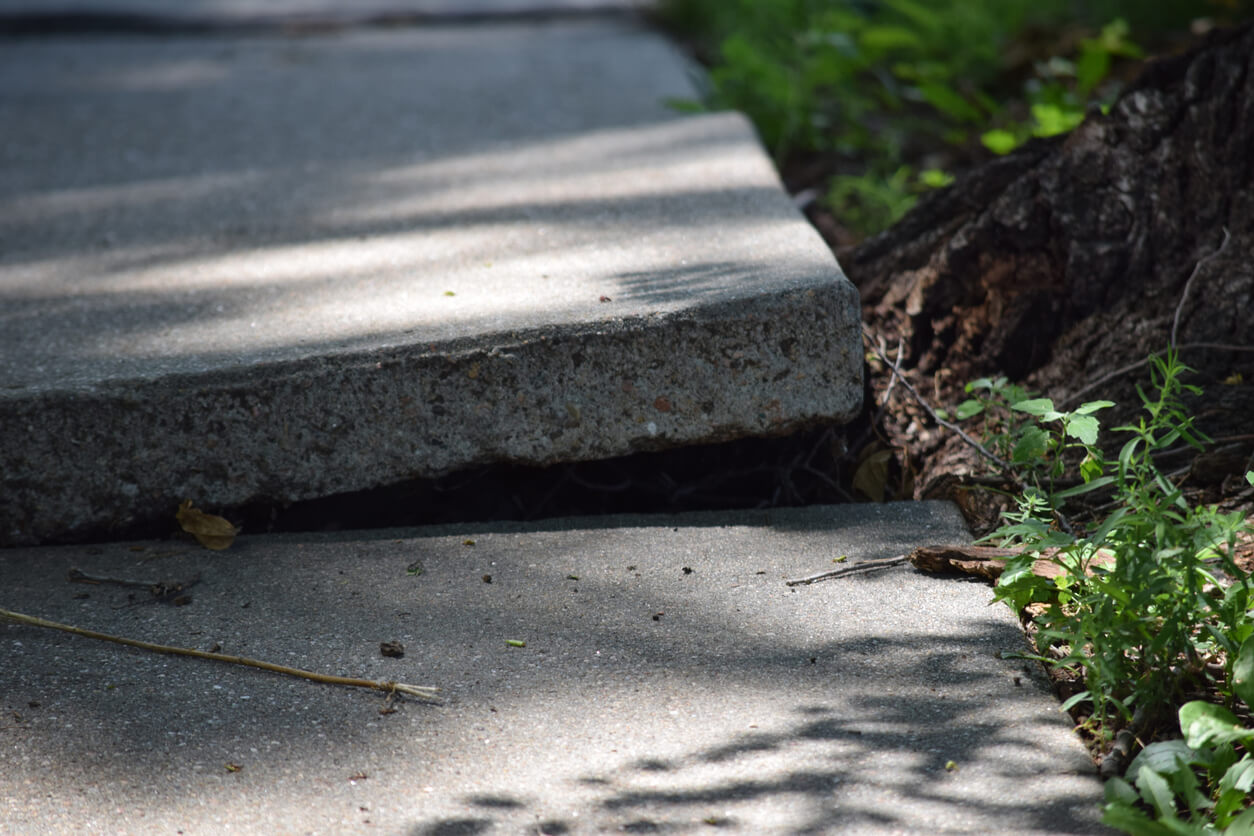Tripping on a sidewalk may not seem like a big deal, but the injuries could be catastrophic. Tripping can cause serious injury to the brain, spinal cord, and back. In some cases, the victim may face life-threatening or permanent injuries that result in substantial medical bills. But who is responsible for the uneven sidewalk that caused the injury?
First, consider the risk involved with uneven sidewalk pavement, stones, and similar surfaces. Ask yourself how often you pay attention to sidewalks you use in your everyday life. Chances are, you don’t. Now think about how many millions of pedestrians and how many sections of poorly maintained sidewalks there are. These are literally accidents waiting to happen.
Typical Injuries from Tripping on a Sidewalk
Tripping on a sidewalk will often cause serious injury. After all, there aren’t very many soft spots to land. Falling onto the sidewalk, on the pavement, or onto an obstacle like a bike rack could result in the following:
- Broken bones
- Bruising
- Cuts
- Brain injury
- Spinal cord injury
- Damage to the teeth and face
These accidents can and do happen to a significant number of pedestrians every year, and they result in significant medical bills. These come in the form of orthopedic and reconstructive surgeries, dental surgeries, and sometimes hospitalization. An injury victim may lose time from work during his or her recovery and can experience pain and suffering.
In the most severe cases affecting the brain and spinal cord, the consequences are much worse. Traumatic brain injuries and paralysis have been caused by slip and fall accidents, including those involving sidewalks. An accident victim might not be able to return to work at the same level of productivity as before the fall. He or she may require special adaptive equipment, like a wheelchair, for daily activities. But who pays for these damages?
Who is liable? The property owner, construction company, or government agency?
Liability generally depends on where the sidewalk is located. Let’s start with a sidewalk on privately owned property. This may be anything from a sidewalk in a residential subdivision to one at the mall. Property owners are required to maintain their premises, including their sidewalks, in a reasonably safe condition. Yet they frequently ignore the various causes of uneven sidewalks, such as erosion, roots growing underneath and pushing the slab up, or cracks.
All it takes is a few inches of height difference between two sections of the sidewalk for someone to trip. The property owner could be held liable for failure to inspect and remedy the problem. This is especially true if the sidewalk is a heavily trafficked area because many people could be injured as a result of this oversight.
Sometimes, construction companies are responsible for uneven sidewalks. Perhaps the property owner hired a contractor to repair the sidewalk, but during the repairs, the contractor failed to put up warning signs. In other cases, construction companies do work near sidewalks and cause damage to them, but again, don’t repair or warn pedestrians.
And then there are cases in which the government might be responsible because the sidewalk is public property. Holding a government entity liable, however, is much different than filing a claim against a private company. In Illinois, there are notice requirements and different timelines for suing the government.
After a tripping accident, take as many photos as you can of the portion of the sidewalk that was damaged. Try to take pictures that show the uneven portion. Place an object in the picture that can be used for comparison so it’s clear how much unevenness there is. Make notes of how the accident happened, and get contact information for any witnesses who saw it. Obtain medical attention right away, even if your injuries seem mild or nonexistent.
Contact Hale & Monico Today
Then, reach out to a skilled personal injury attorney. Hale & Monico represents victims who have been hurt because of uneven sidewalks. Call us today to schedule your confidential consultation.

